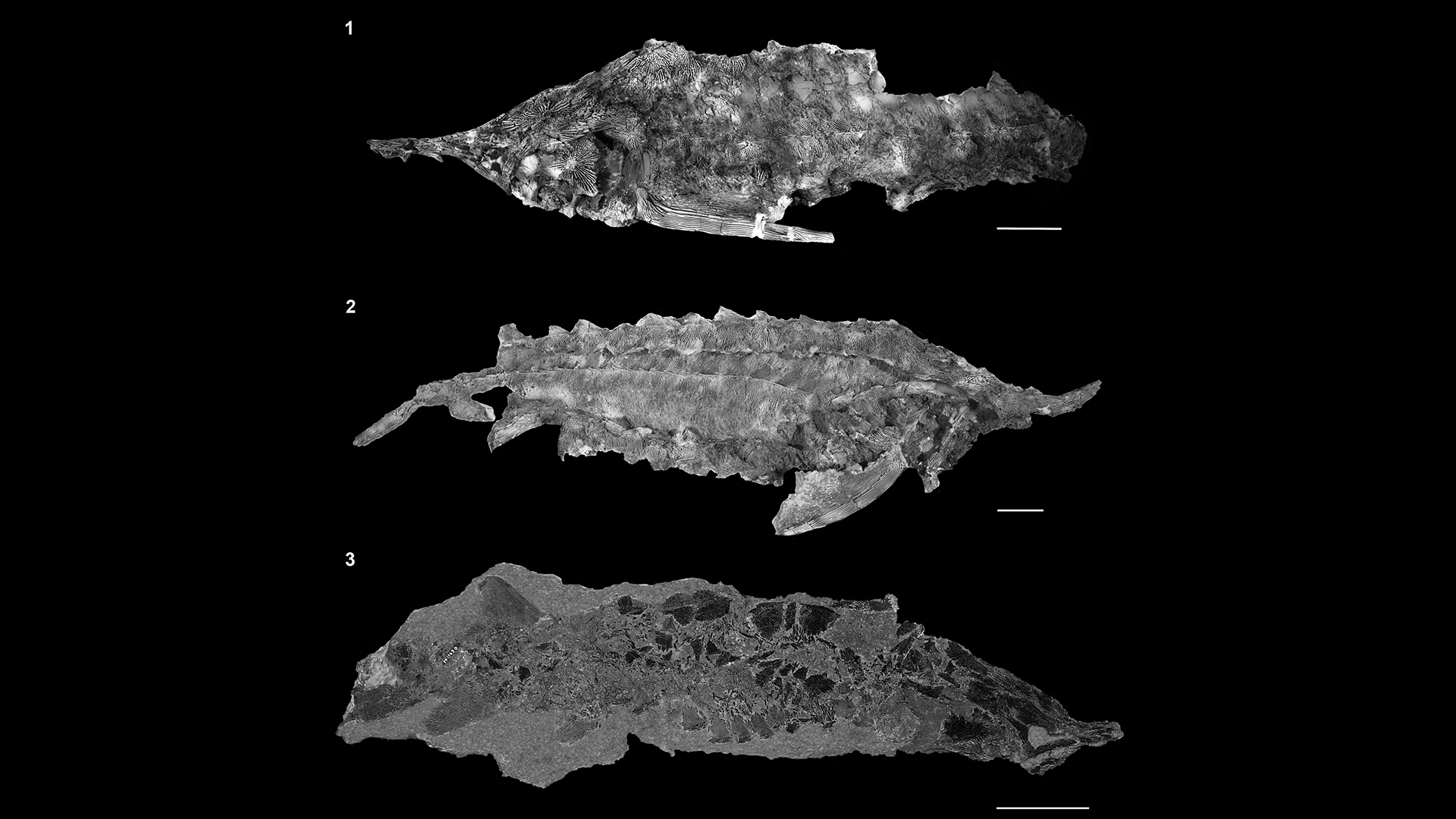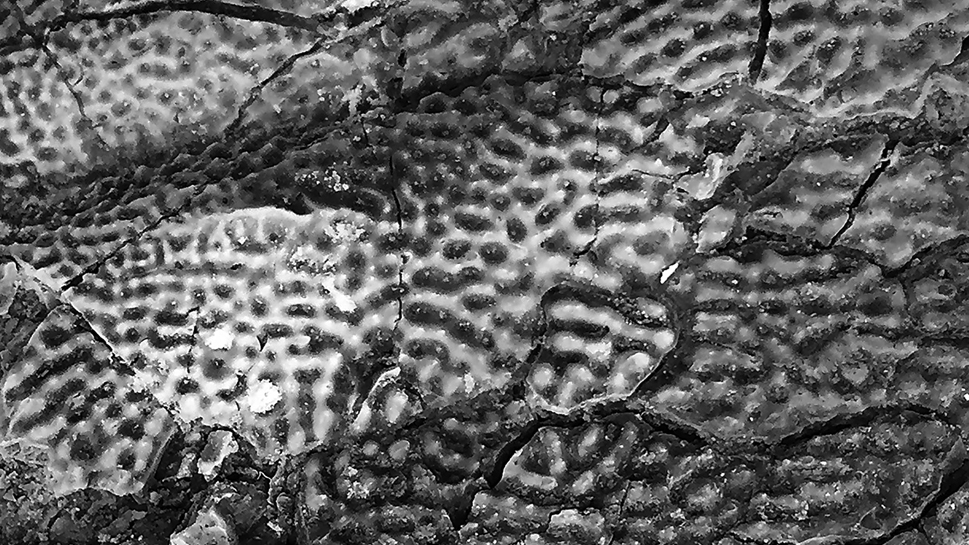'Hell fish' likely killed by dinosaur-ending asteroid is preserved in stunning detail
Four exceptional fossils represent newly described species.

Just beneath the scrubby plains of southern North Dakota at the site of an ancient riverbed, paleontologists are hard at work digging up the end of the world as the dinosaurs knew it.
Now, they've discovered two newfound species of 66 million-year-old sturgeon that lived and died alongside dinosaurs, preserved as fossils in exquisite three-dimensional detail. Their work was published in the Journal of Paleontology on Oct. 3.
The team found the fossils at a site called "Tanis," named after the purported last resting place of the Ark of the Covenant in the 1981 movie "Raiders of the Lost Ark." Tanis is a section of the famous Hell Creek Formation, which spans parts of Montana, South Dakota, North Dakota and Wyoming, and it was once home to a large, deep river that fed the now-dry Western Interior Seaway that stretched from the Gulf of Mexico to the Arctic Ocean. But one fateful day 66 million years ago, Tanis became a mass grave for thousands of ancient freshwater fish, which were smothered and buried in place in the blink of an eye, possibly in the minutes after the asteroid impact that wiped out the nonavian dinosaurs.
"It was really amazing," Lance Grande, a paleontologist at the Field Museum in Chicago and co-author of the study, told Live Science. "I mean, [the fish] were stacked up like cordwood."
Related: Photos: Cretaceous 'Graveyard' Holds a Snapshot of the Dino-Killing Asteroid Impact
After years of excavation, Grande and his colleagues finally got the chance to begin studying the fossil fish up close. They quickly realized that four (two of each species) of the specimens were something special. Almost all of the creatures' bony outer coverings, or scutes, were intact and impeccably preserved. And the specimens help fill a gap in North America's fossil record, which lacks many late Cretaceous species. "They have a lot of clear sturgeon similarities, which makes them easy to identify," Grande said. "But they have various unique features that allow us to describe them as something new."
The researchers dubbed one of the newfound species Acipenser praeparatorum ("acipenser" means "sturgeon" in Latin, and "praeparatorum" translates as "to make ready," in honor of the team that prepared the fossil prior to its investigation); they named the other species Acipenser amnisinferos, or the "sturgeon from Hell's Creek.") Both fish species are extinct today. However, they bear an unexpected resemblance to modern-day sturgeon that are native to East Asia and Europe, rather than North America, study co-author Eric Hilton, an evolutionary biologist at the Virginia Institute of Marine Science, told Live Science.
Get the world’s most fascinating discoveries delivered straight to your inbox.
Sturgeons and their relatives are particularly distinctive in the fossil record. "They have these big, bony plates on the outside," Hilton explained, which protect the fishes' corpses from being torn apart by waves or strong river currents that tend to pulverize the remains of more delicate fishes. And since exposure to lots of oxygen tends to break down body tissues before they can fossilize, sturgeons' preference for low-oxygen environments sets them up for preservation.
For the sturgeons at the Tanis site, however, it wouldn't have mattered how much oxygen was in the water on the day they died; they were the victims of a massive tidal wave that swept thousands of pounds of sediment into the river, burying them almost instantly. Scientists suspect that this wave was triggered by the same dinosaur-killing Chicxulub asteroid that smacked into the Yucatán Peninsula — Tanis is littered with tiny, telltale beads of glass, called tektites, that are chemically identical to those found at the Chicxulub crater, Live Science previously reported. Like the rest of the Hell Creek Formation, Tanis today is a snapshot of the end of the Mesozoic era.
In addition to the two newly described sturgeon species, the river was chock-full of paddlefish, bowfish, ammonites, various insects and aquatic reptiles called mosasaurs. And, the researchers suspect, there are probably many more species lurking in the sediments, waiting to be excavated.
"This is awesome," said Hilton, "But it's the tip of the iceberg."

Joanna Thompson is a science journalist and runner based in New York. She holds a B.S. in Zoology and a B.A. in Creative Writing from North Carolina State University, as well as a Master's in Science Journalism from NYU's Science, Health and Environmental Reporting Program. Find more of her work in Scientific American, The Daily Beast, Atlas Obscura or Audubon Magazine.



